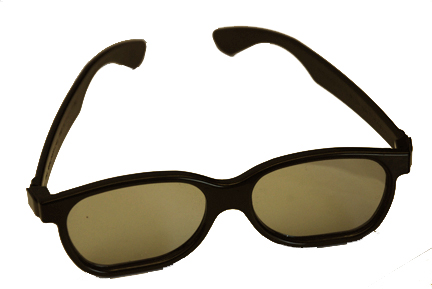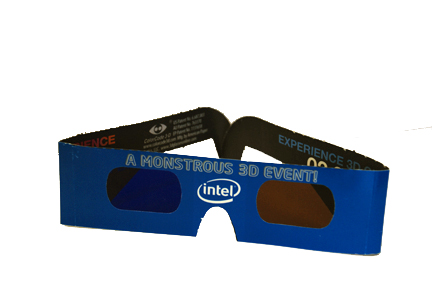From paper glasses to home entertainment, 3-D evolves
By Alex Emslie
The Guardsman

Left starry-eyed by the success of James Cameron’s “Avatar,” a nearly $300 million foray into the third dimension, television manufacturers and techies alike have one concept on their mind for 2010: 3-D TV.
The Consumer Electronics Show, held in Las Vegas in early January, provided a platform for the industry’s heavy-hitters to preview their upcoming 3-D products. Panasonic, Sony, Samsung, Toshiba and LG showcased merchandise expected to hit stores by the end of this year. Mitsubishi already offers 3-D capable televisions that start at about $2,000.
A 3-D-capable TV can display regular 2-D programs or convert them into three dimensions. This is done by displacing and alternating the 2-D image to create a third dimension, though the result is not as breathtaking as actual 3-D programming.
To understand how a two-dimensional, flat screen can create the illusion of three dimensions, it’s important to understand how vision and depth perception work.
Human eyes receive two slightly varying images which are then combined in the brain, similar to the “camera one, camera two” bit in the movie “Wayne’s World.” The difference between the two images allows the brain to calculate depth and distance.
For the illusion of depth to work, the images must be perceived as different by each eye and each eye must be blind to what the other is seeing.
The original solution to this problem was the advent of those red and green-tinted, paper glasses, which represented the first attempt at 3-D technology. The red and green filtration dulls vibrant color, though, and the calibration between the two images was usually off, which caused some viewers to experience vertigo.
The 3-D glasses given to viewers of “Avatar” make nausea and most eye strain, concerns of the past. The left and right lenses of these glasses are polarized perpendicularly to each other, meaning the left lens only accepts vertical rays of light and the right lens horizontal, or vice versa. The live action shots in “Avatar” were filmed with two cameras, perfectly synced, so that they correspond to the eye meant to view each image. Computer-generated scenes were created in a similar fashion, using separate images for each eye.
The next generation of 3-D TVs relies on the same idea, but uses shutter glasses. The effect is achieved with a transmitter that sends information to the glasses causing a shutter to blind the eye corresponding to the image being shown. Because the image on the TV changes 120 times per second, this method does sacrifice perceived brightness. Sony, Samsung and Mitsubishi are all using shutter-glasses technology in their 3-D product lines.

Is it possible to achieve 3-D imaging without the feeling of watching TV while wearing sunglasses? According to Wired.com, there are two ways to create a 3-D illusion without the glasses: lenticular lenses or a parallax barrier. Both technologies involve moving the filter from the viewer’s head to the television. Both require the viewer to sit in a “sweet spot” in order to work. Viewed from anywhere else, the image would appear blurry and content not meant for 3-D wouldn’t work with the filter.
ESPN has announced a 3-D channel that will become available this year and has slated the 2010 FIFA World Cup for its inaugural broadcast. DirecTV and Discovery Communications have also released plans for 3-D networks for late this year or early 2011. Comcast spokesman Andrew Johnson said he couldn’t speculate on whether the cable company will carry 3-D channels.
“We are aware that a number of networks are thinking of offering 3-D content,” he said. “We will continue to work with those networks to provide services that work for our customers.”
While it remains to be seen whether 3-D television is just a passing fad, the presenters at the 2010 CES certainly believe we are on the precipice of a revolution in home entertainment.The 3-D capable television sets will cost $200 to $500 more than HDTVs that are currently available. The prospect of awe-inspiring visuals has engineers and accountants banking that TVs more than $1,000 are worth it to consumers.

Comments are closed.